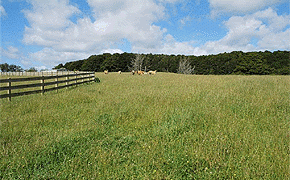
By Allan Barber
Last summer’s drought has badly affected breeding numbers and next season’s lamb and beef cattle numbers.
The far north’s ewe population was particularly heavily hit, while the breeding cow herd in the Taranaki - Manawatu region was 11% down purely because of the drought.
These are two of the headlines from the Beef and Lamb New Zealand annual stock number surveys: sheep numbers have fallen to 31 million with pregnancy levels down over 6% nationally, while the beef cattle herd has dropped to 3.69 million, compared to 4.75 million dairy cows.
Ewe numbers are now 24% lower than a decade ago and beef cow numbers are down 17% over the same period.
The North Island suffered more than the South Island, but whichever way you look at the numbers next season’s lamb kill is predicted to be a further 2 million or 10% down on last year.
Inevitably the reduced volume available for slaughter will make the amount of processing capacity even more untenable, since the industry already has the capacity to process all the slaughter stock in about 26 weeks.
This raises the issue of how long this state of affairs can continue before something gives way – either the patience of shareholders or banks which are financing the processors with fixed assets as security.
It may be a truism, but eventually the valuation of an asset for security purposes must be based on its productive value.\
If there isn’t enough throughput to sustain profitable use of the asset, the options are either to close or mothball it.
Less livestock for processing will fuel procurement competition, regardless of the state of international beef and lamb prices.
The inevitable consequence will be company losses and this raises the question of rationalisation or closure to mitigate those losses.
-------------------------------------------------------------------------------------------------------------------------------------------
Farms For Sale: the most up-to-date and comprehensive listing of working farms in New Zealand, here »
-------------------------------------------------------------------------------------------------------------------------------------------
Outcomes to talks of meat industry restructuring have gone very quiet since last month when gaining general agreement to any version of tradable slaughter rights proved impossible.
The Meat Industry Excellence Group has also gone quiet in spite of talk about high profile experts joining their campaign.
Therefore it looks as if things will continue much as before without any silver bullet to resolve the problems of the meat industry.
But the drop in livestock numbers which may recover slightly, but not greatly, with better climatic conditions will start to put the acid on any underperforming companies.
The sell down of inventories means that virtually all livestock can be converted into cash at what look like sustainably firmer prices next season, but margins may not be good enough because of procurement competition to produce strong profits.
And this brings us back ultimately to the pressure on balance sheets and the need for shareholders and bankers to make some tough decisions.
---------------------------------------------------------------------------------------
Here are some links for updated prices for
- lamb
- beef
- deer
- wool
Y Lamb
Select chart tabs
---------------------------------------------------------------------------------------
Allan Barber is a commentator on agribusiness, especially the meat industry, and lives in the Matakana Wine Country where he runs a boutique B&B with his wife. You can contact him by email at allan@barberstrategic.co.nz or read his blog here ».

We welcome your comments below. If you are not already registered, please register to comment
Remember we welcome robust, respectful and insightful debate. We don't welcome abusive or defamatory comments and will de-register those repeatedly making such comments. Our current comment policy is here.